M104, the Sombrero Galaxy
M31, the Andromeda Galaxy
M33, the Pinwheel Galaxy
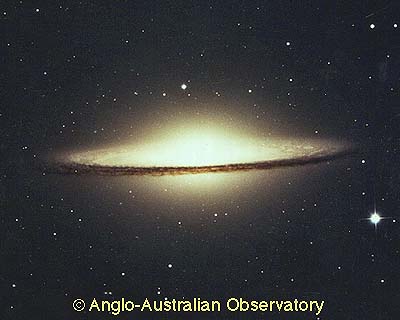

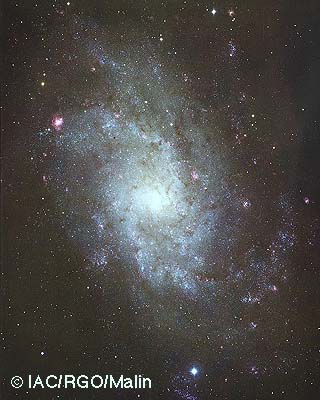
Hubble proposed that galaxies be classified according
to their appearance.
|
Sa: Large central
bulge, smooth, tightly wrapped spiral structure
|
Sb: Less noticable
bulge, looser spiral structure
M31, the Andromeda Galaxy |
Sc: Weak or no
bulge, open spiral structure, very knotty appearance
M33, the Pinwheel Galaxy |
 |
 |
 |
There is a parallel sequence for spiral galaxies that have central bars: SBa, SBb, SBc
| SBa | SBc |
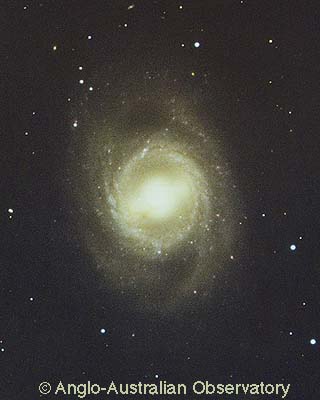 |
 |
| The Milky Way is probably an Sbc or SBbc, something like this galaxy, M83. | 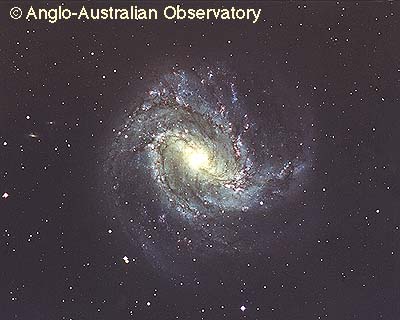 |
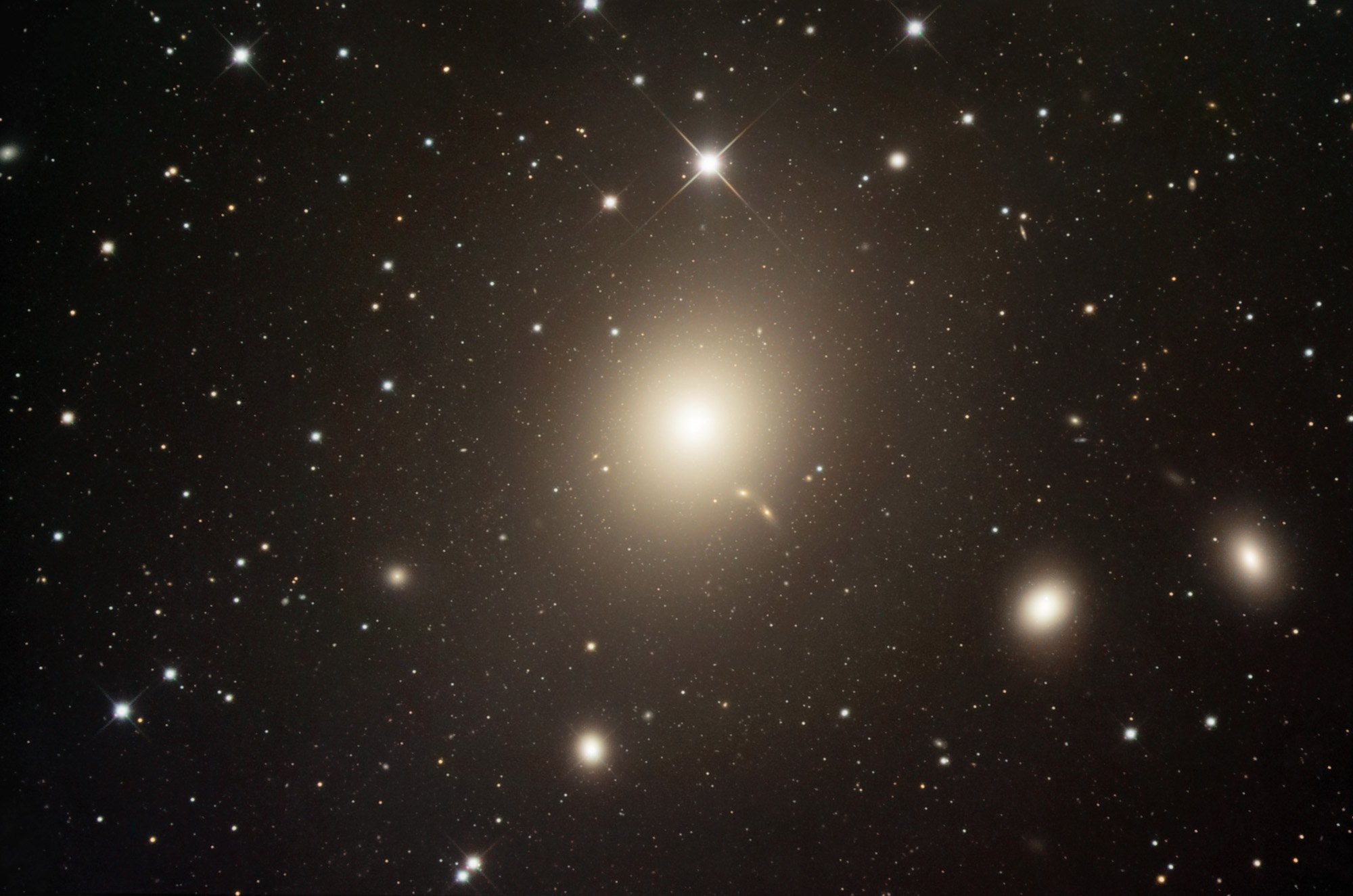
Elliptical galaxies are not just round. Hubble classified them as E0 -
E7, where the number refers to their axis ratio 1-(b/a).
[E0=round, E7=very squashed].

But note that the observed shape may have nothing to do with the true shape, due to projection effects:
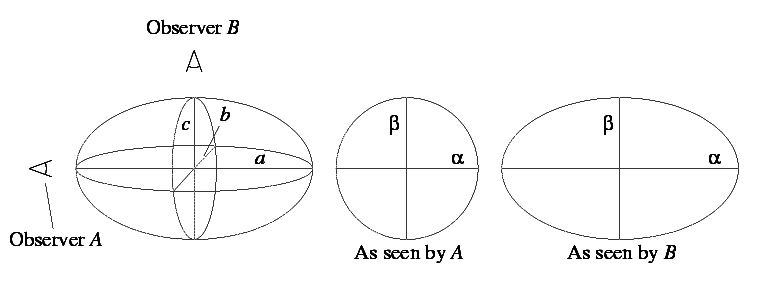
From morphology alone we can't tell if elliptical galaxies are
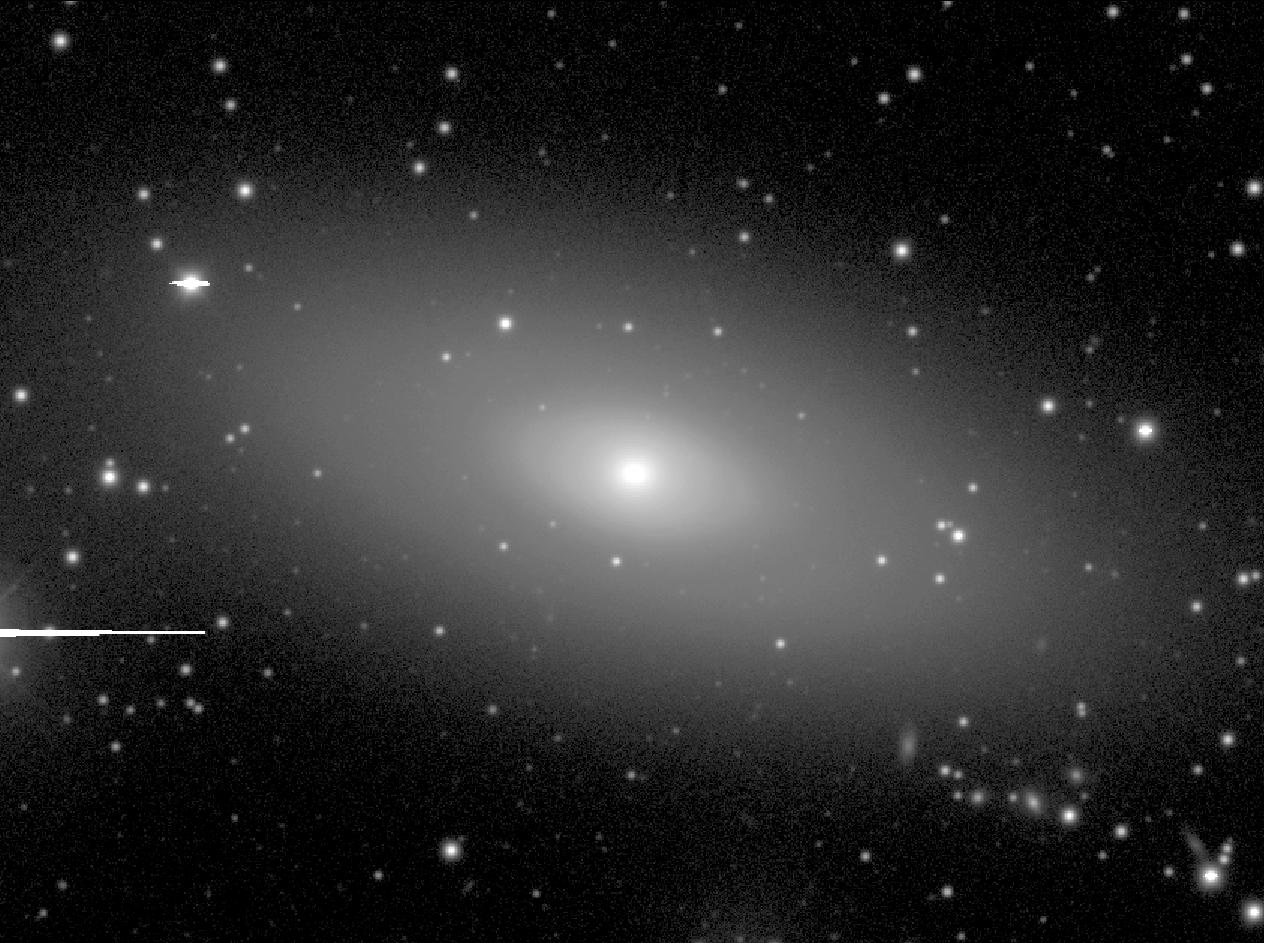
Like the Large and Small Magellenic
Clouds, nearby companions to our own Milky Way
 |
 |
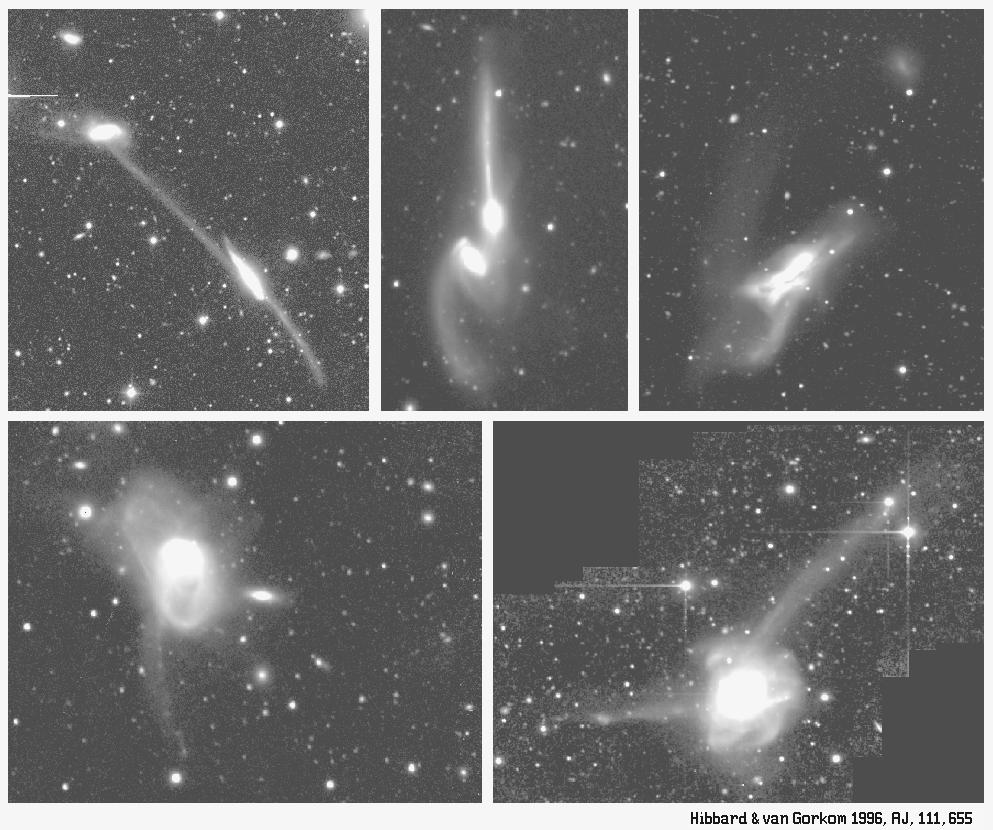
Hubble put these all together into his famous "tuning fork" diagram of galaxy classification:

This was often thought to represent an evolutionary diagram. It's not!
Here is a discussion of the pitfalls associated with using Hubble typing to discuss galaxy evolution (courtesy Greg Bothun, University of Oregon)